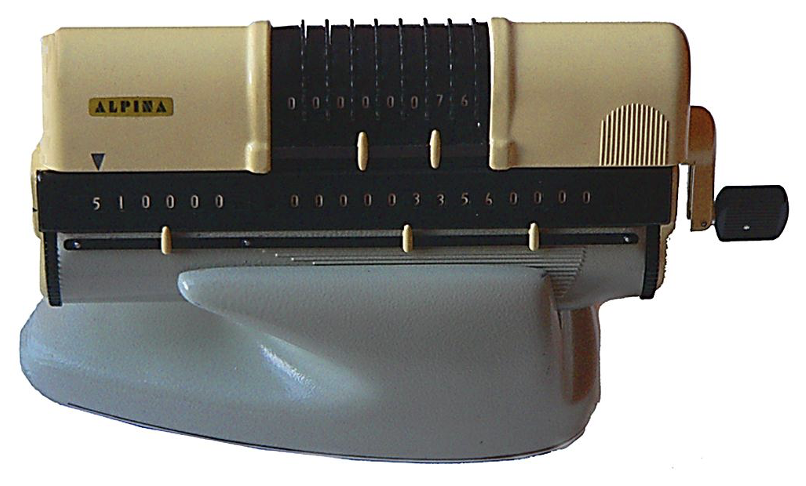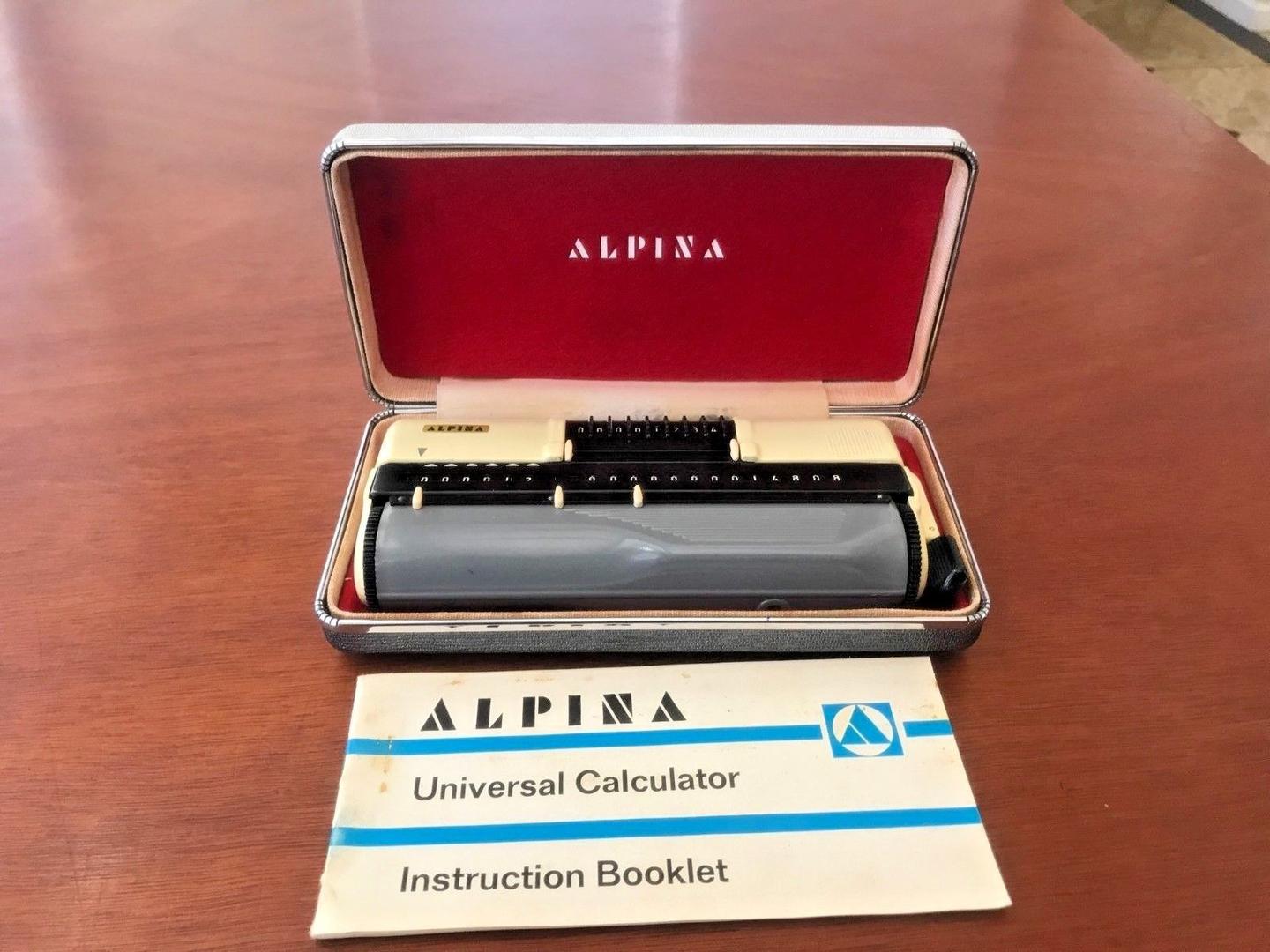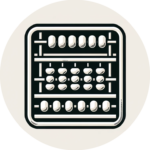ALPINA, 1960
Inventor
Prototype developed by Oskar MILDNER (Germany)
Invention date
1960, Hanover fair
Manufacturing date:
1961
Manufacturing location
Kaufbeuren (Germany)
Manufacturer
ALPINA
Dimensions
L 17 H 9 W 42 Weight (550gr)
Reference Number
135

History and Functionality
ALPINA is a German manufacturer based in Kaufbeuren, Germany. In 1958, a small team, gathered around the young master of mechanics Oska MILDNER. They began building prototypes of calculating machines. All the components were handmade.
At the Hanover Fair in 1959, a prototype was presented. The reception was positive and the tools for mass production were developed during the following months. The next year, the first 10 samples of the pre-series were presented to a wider circle. The green light was given for mass production in 1961.
However, manufacturing problems led to order cancellations. It became very difficult to compete with CURTA, which already had a great reputation. Production was short lived.
About 7,000 machines were produced. It can handle 8 digits for a result not exceeding 13 digits.
The quality is very well done and on a par with the CURTA.
The machine can be detached from its base and fits in a holster. It can be carried with one hand.
About The Inventor
Oskar Mildner, an inventive engineer, played a pivotal role in the development of the ALPINA calculator, which was first showcased as a prototype at the Hanover Fair in 1960. The ALPINA, known for its compact and efficient design, was a significant advancement in mechanical calculators during this era.
The story of the ALPINA calculator is intertwined with the history of its manufacturer, also named ALPINA, which was primarily known for producing typewriters. ALPINA, active from 1949 to 1963, was based in Germany and had established a reputation for making some of the best typewriters of the time. This expertise in precision engineering and mechanical design laid the groundwork for their venture into calculator manufacturing.
In 1958, Oskar Mildner, one of the engineers at ALPINA, built a small mechanical calculating device capable of performing all four basic arithmetic operations. This device was the genesis of the ALPINA calculator. Production started in late 1960, but the company faced challenges in marketing and selling the device. One of the main reasons for this was the established popularity of the Curta calculators, which were already well-known for being small, accurate, and reliable. To compete effectively, ALPINA needed a product that was either superior or more affordable, which apparently was not the case. Consequently, production of the ALPINA calculator stopped in 1961 after only a few thousand units were produced, making it a rare and sought-after collector’s item today.
Despite its brief production run, the ALPINA calculator remains a notable example of mechanical calculator design. Its development was a testament to Oskar Mildner’s innovative spirit and the company’s willingness to diversify into new technological arenas. However, the rapidly evolving landscape of calculating technology and the fierce competition from established brands like Curta ultimately led to the ALPINA calculator’s short-lived presence in the market.


